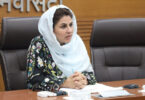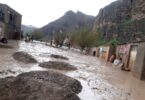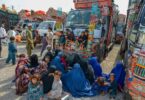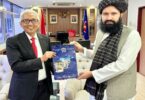Sehrish Khan
The land that is now Afghanistan has a long history of domination by foreign conquerors and strife among internally warring factions. At the gateway between Asia and Europe, this land was conquered by Darius I of Babylonia circa 500 B.C., and Alexander the Great of Macedonia in 329 B.C., among others. Mahmud of Ghazni, and 11th century conqueror who created an empire from Iran to India, is considered the greatest of Afghanistan’s conquerors. Genghis Khan took over the territory in the 13th century, but it wasn’t until the 1700s that the area was united as a single country.
By 1870, after the area had been invaded by various Arab conquerors, Islam had taken root. During the 19th century, Britain, looking to protect its Indian empire from Russia, attempted to annex Afghanistan, resulting in a series of British-Afghan Wars (1838-42, 1878-80, and 1919-21).
The British, beleaguered in the wake of World War I, are defeated in the Third British-Afghan War (1919-21), and Afghanistan becomes an independent nation. Amanullah declares Afghanistan a monarchy, rather than an emirate, and proclaims himself king. Critics, frustrated by Amanullah’s policies, take up arms in 1928 and by 1929, the king abdicates and leaves the country. In 1933, Zahir Shah becomes king. The new king brings a semblance of stability to the country and he rules for the next 40 years. In 1934, US formally recognized Afghanistan. The US, Pakistan, Afghanistan, and the Soviet Union sign peace accords in Geneva guaranteeing Afghan independence and the withdrawal of 100,000 Soviet troops in 1989. In 1997, Taliban publicly executes Najibullah. On Sept 11, 2001, Hijackers commandeer four commercial airplanes and crash them into the World Trade Center Towers in New York. In 2002, grand council, elected US-backed Hamid Karzai as interim leader. Amid increased violence, NATO takes over security in Kabul in August in 2003. IN 2014, NATO officially ends its combat mission in Afghanistan but troops remained to train Afghan forces. On 15 August, 2021, Afghanistan government collapsed as the Taliban takes over Kabul.
On January 28, 2022, the news of the Afghan news agency Tolo reported that the people of Afghanistan have started selling their kidneys to put out the fire in their stomachs. Most of these forced and helpless people are children and women who have been forced to sell their organs. We know that the people of Afghanistan have been in turmoil for decades. However, the situation there was not as bad. Today, they are in dire need of many basic necessities, including food, water and medicine. Assets are frozen. In this situation, the level of unemployment, poverty and hunger in Afghanistan has reached alarming levels. In which the helpless people there have only two options left to go to another country or to stay in Afghanistan and wait to die of hunger and thirst.
There is no doubt that keeping South Asia in a state of crisis in order to control China is part of the US strategic strategy. In which it has the support of India, which in this context is destabilizing the region for the sake of American interests and goals. In this way, the $23 million owned by the people of Afghanistan is being frozen and a new global game is being laid in the region. Everyone knows that any country that conflicts with US interests, like Afghanistan, has its assets frozen or, like Iran, is subject to sanctions. At the same time, the United States has the freedom to attack any country, as it did in Iraq, Libya, Syria and Afghanistan. Is. It has long been a battleground for world powers and they still want to somehow maintain their supremacy over it. The United States wants to worsen the current situation in Afghanistan to such an extent that its people will stand up against their own government and eventually be forced to move to neighboring Pakistan and Afghanistan. The United States is seeking to gain influence over senior Afghan government officials as well as terrorist groups operating there. That is why many terrorists are lining up against the Taliban government. This situation is also a matter of concern for Pakistan as safe havens for terrorists in Afghanistan could pose a serious threat to it.
The United States and India are working hard, both openly and secretly, to get the Afghan Taliban to include the Northern Alliance and their other puppets in their interim government. In addition to putting direct pressure on the Taliban, it is also indirectly using the influence of 20 countries, India and Central Asian states. In this context, the G20 countries met with representatives of the Islamic Emirate and civil society in Oslo on January 24. In it, they expressed concern over human rights abuses in Afghanistan and called for the establishment of a joint government for a peaceful future. The participants in the meeting also called for immediate assistance to Afghanistan, but the statement clarified that they do not endorse the Afghan government.
India is moving through the Central Asian states. On January 29, Modi held a virtual meeting with the heads of CARs to discuss the situation in Afghanistan. India had held talks with Central Asian states immediately after the US withdrawal from Afghanistan. The reason for this is that he wants his influence in Afghanistan to prove himself as the leader of the region and to the detriment of the interests of Pakistan and China.






